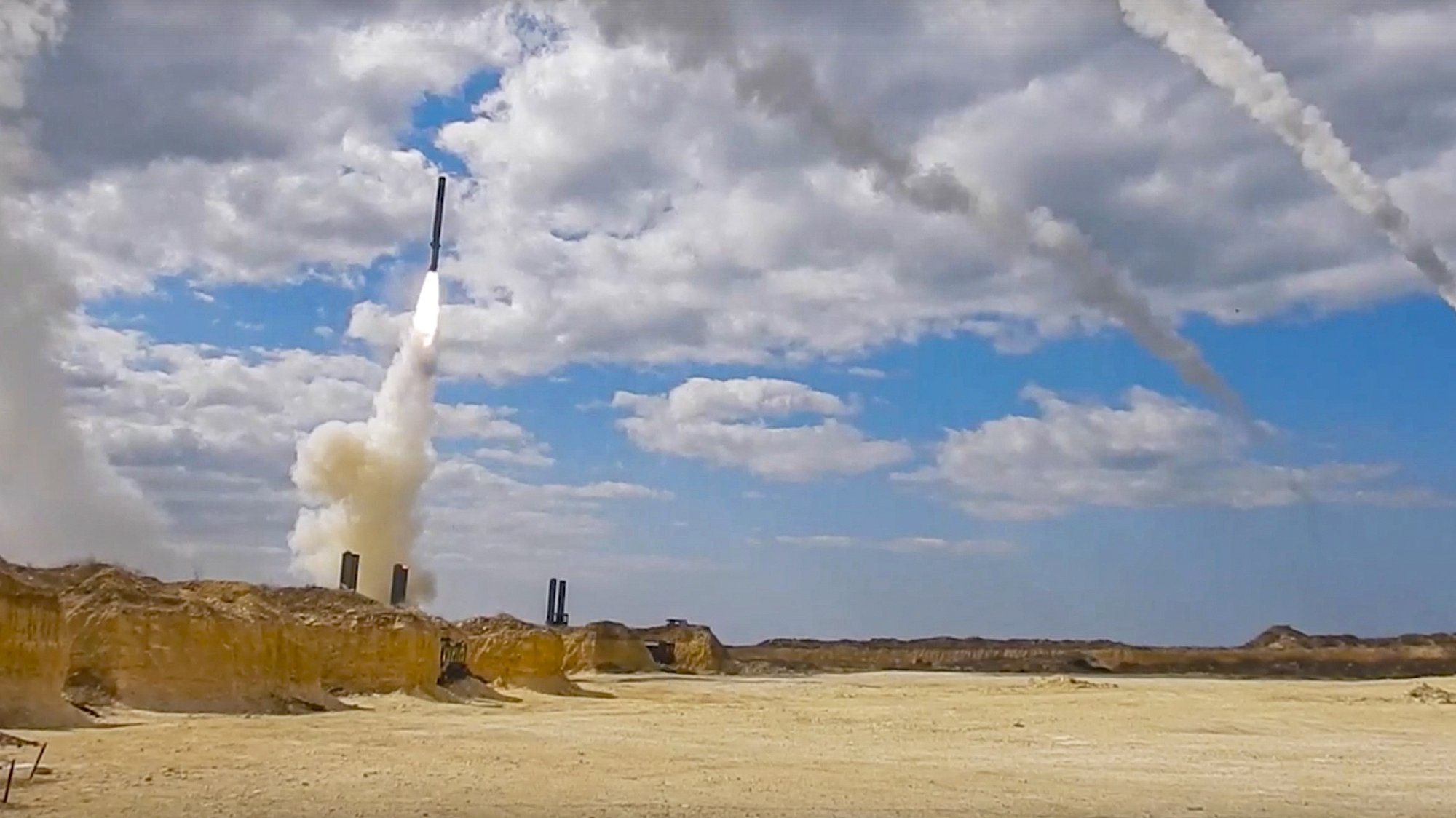Russia has fired more missiles in the Ukraine campaign than any country in other conflicts since World War II, military experts report to US magazine Newsweek, highlighting flaws in the Russian campaign.
According to the publication, the high number of shots since February 24 was not enough for the invader to win the conflict, which has been going on for more than three months, underlining that the “bombing campaign” achieved “few” results in practice.
“[Um total de] 2,154 Russian missiles hit our cities and communities in just over two months,” Ukrainian President Volodymyr Zelensky said last week.
“The Russian bombardment of Ukraine does not stop day or night,” stressed the Ukrainian head of state.
This maximum value for the number of missile strikes increased after Volodymyr Zelensky announced that kyiv had shot down Russian warplanes, a result considered “shameful” by Newsweek, noting that the Moscow Air Force is 15 times superior to the same Ukrainian military branch.
The publication cites various experts and military intelligence reports on Ukraine.
The limited success of the campaign, according to the sources consulted, is due to the The “failure” of Russia when it should have used the numerical advantage in terms of manpower and material, namely the Air Force.
Newsweek also reports that there has been a decline in the supply of precision weapons on the ground.
Russia attacked airfields and air defense points during the first two days of the invasion but did not follow the same procedure in the following weeks.
The smaller Ukrainian Air Force was largely on the ground, but kyiv was able to adapt and improve its dispersal methods through missile defense, particularly surface-to-air missiles.
“It’s about the air superiority of the poor,” one expert told the US-published magazine.
Threatened by Ukrainian surface-to-air missiles, Russia began to use fewer and fewer bombers beyond the front line. established by the Army itself on the ground.
US military intelligence reports cited by the magazine indicate that “slightly more than 10% of sorties” by the bombers went beyond the front line.
You Russia’s long-range attacks on “strategic targets” continuedbut they were carried out by a combination of missiles fired from land, air and sea.
Russian fighter planes and bombers, supported by combat artillery, ships, including submarines, launched fire “without entering Ukrainian airspace.”
For Newsweek, the characteristics of the current conflict in Ukraine vit will not have consequences in the future that allow evaluating the effectiveness in the use of different types of missiles or under the control of the heavens, among other aspects.
So far, the fallout from the air war in Ukraine is “doubly disastrous” for Moscow, experts insist.
“In the future, no one will want to buy Russian weapons. Russia is the second largest arms exporter after the United States and the course of the war does not bode well for the future [relativo a venda de material bélico russo[“, insistem os especialistas.
A ofensiva militar lançada na madrugada de 24 de fevereiro pela Rússia na Ucrânia causou já a fuga de mais de 14 milhões de pessoas dos locais onde residiam — mais de oito milhões de deslocados internos e mais de 6,6 milhões para os países vizinhos –, de acordo com os mais recentes dados da ONU, que classifica esta crise de refugiados como a pior na Europa desde a Segunda Guerra Mundial (1939-1945).
Também segundo as Nações Unidas, cerca de 15 milhões de pessoas necessitam de assistência humanitária na Ucrânia.
Source: Observadora
